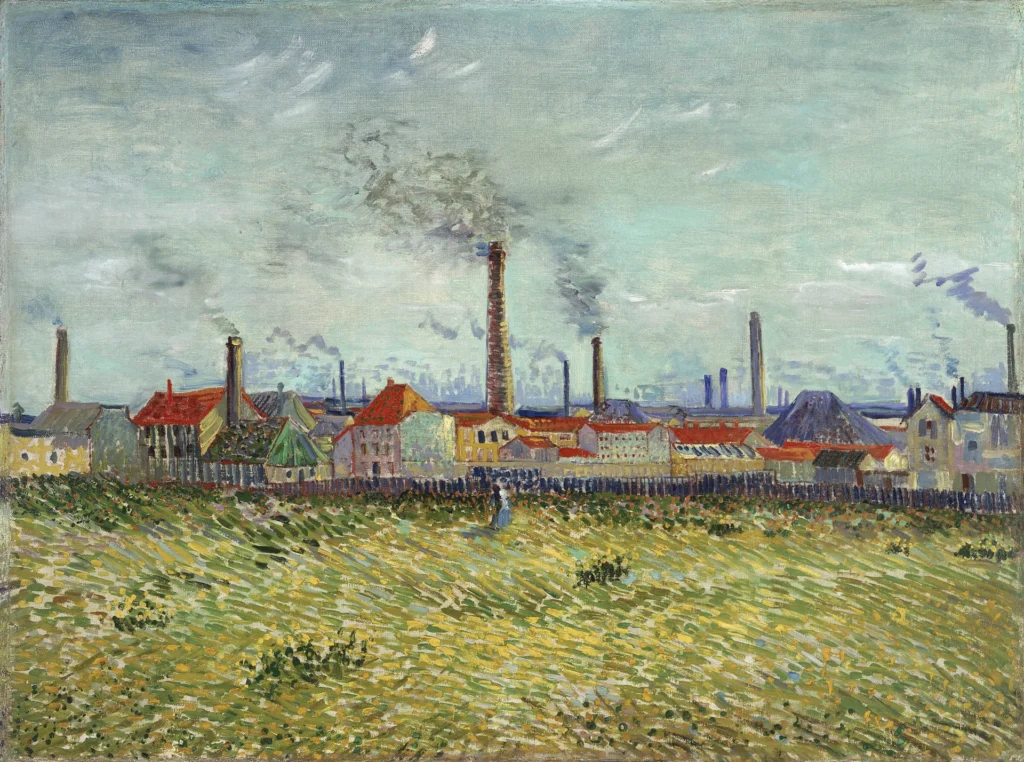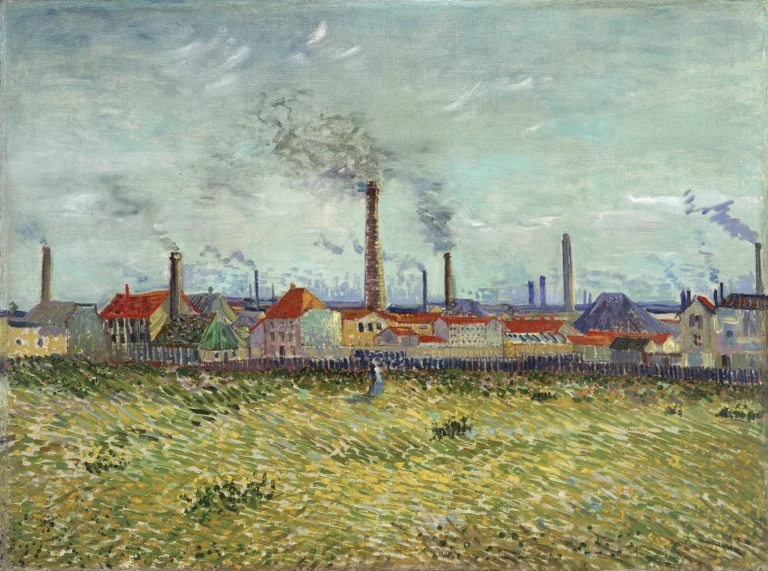Factories At Clichy (1887)
Vincent van Gogh's Factories at Clichy beautifully captures the industrial landscape of Asnieres, a suburb of Paris, as seen from the Quai de Clichy. Painted in 1887 during his Parisian period, the artwork showcases Van Gogh's shift towards a Neo-Impressionist style, influenced by avant-garde movements and his contemporaries. The bold colors and expressive brushwork reflect his fascination with urban life and the interplay between industrial scenes and nature. Indeed, this painting marks a significant chapter in Van Gogh's evolution as an artist, highlighting his growing awareness of modernity and its impact on the environment.
Year 1887
About the Artwork
Created in 1887, during a pivotal time for Van Gogh, Factories at Clichy embodies his exploration of urban subjects against the backdrop of rapid industrialization. His move to Paris one year earlier brought him into contact with innovative artistic movements and luminaries such as Émile Bernard and Paul Gauguin. This exposure prompted a transformation in his work, as evidenced in this painting. The juxtaposition of factories and nature in Factories at Clichy reveals Van Gogh's introspection regarding the changing world around him, making it a vital study of the period’s zeitgeist. The artwork serves as both a personal expression and a commentary on the society that was rapidly evolving in the late 19th century.
Did You Know
Van Gogh’s fascination with the industrial landscape was deeply intertwined with the rapid urbanization of the late 19th century, reflecting a society in transition, mirroring his own artistic evolution.
Influenced by the Neo-Impressionist style, Van Gogh experimented with color theory and light, embodying the vibrant palette and dynamic brushwork characteristic of this movement.
Factories at Clichy remains a popular subject for art reproductions, reflecting its enduring appeal and importance within the canon of Van Gogh’s work and its representation of urban life.










